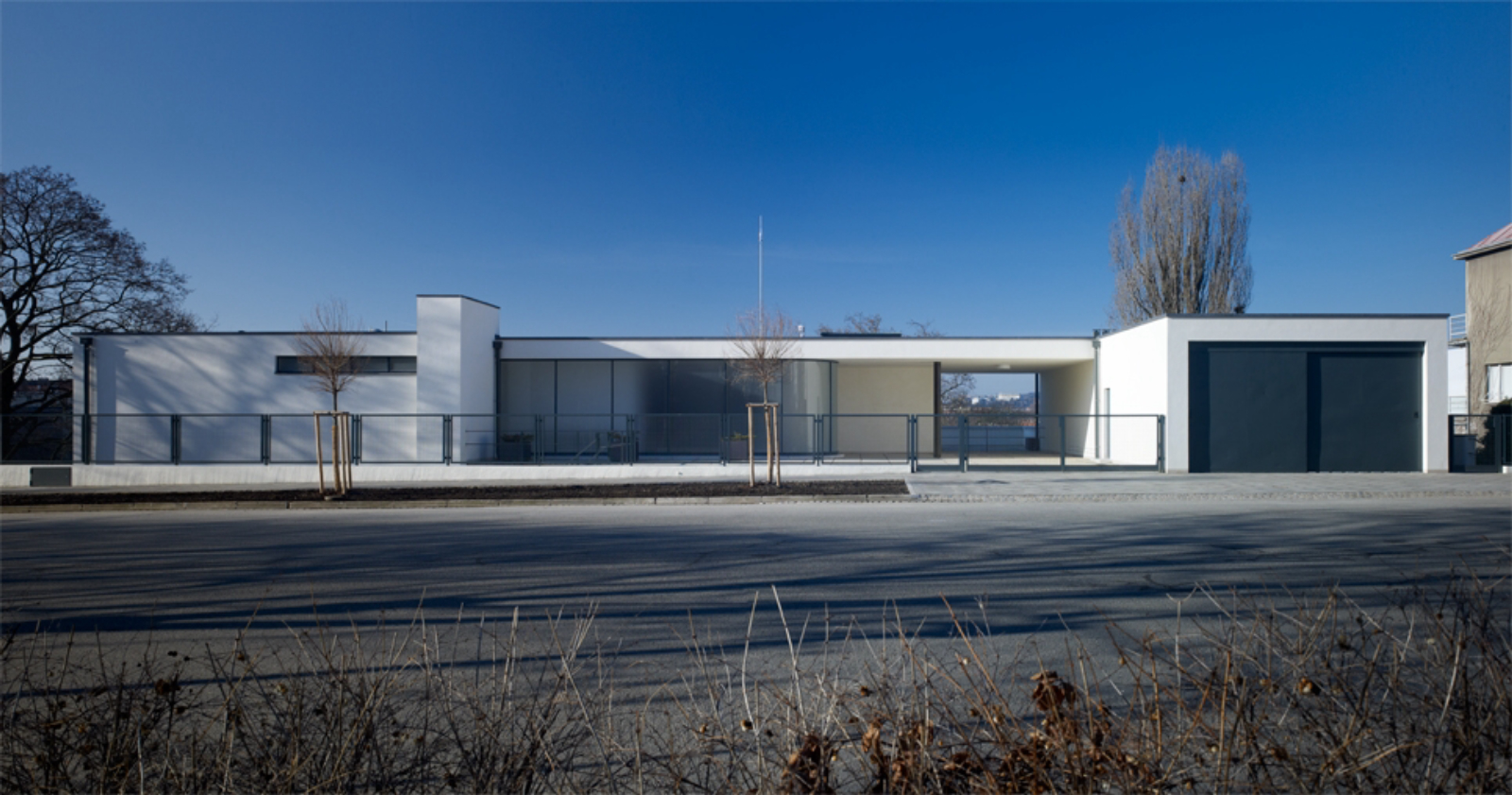While DC waits one more year for its own Mies van der Rohe building, the MLK Library, to be completed, please join the AIA DC chapter for a lecture on one of Mies’ great works, the Tugendhat House. A supersized version of his famed Barcelona Pavilion, this house and its restoration combine great architecture with a compelling 20th century story.
Art Historian Daniela Hammer-Tugendhat, a daughter of the original owners, and her husband, Ivo Hammer, who chaired the international expert commission that consulted on the restoration will speak on the building and its history as part of a national lecture series sponsored by the Mies Van der Rohe Society in Chicago and David and Margaret Hensler of Washington DC.
Villa Tugendhat was commissioned by Fritz and Greta Tugendhat and completed in 1929. In 1938, the family fled to Switzerland after the signing of the Munich Pact, a year prior to the Nazi invasion. The villa was confiscated by the Gestapo in 1939. It suffered considerable damage during combat at the end of World War II and later, when it served as quarters and stables for the Soviet military.
Greta Tugendhat returned to the villa in 1967 with a senior architect from Mies's Chicago studio and explained the original design to him, and a group of Czech architects set out to repair it and was restored in 1980. On August 26th, 1992, the political leaders of Czechoslovakia met there to sign the document that divided the country into the Czech Republic and the Slovak Republic. Since 1994 the villa has been open to the public as a museum administered by the city of Brno.
In 2007 the Tugendhats' heirs applied for the restitution of the villa, citing a law covering works of art confiscated during the Holocaust. By that time, some of the concrete was deteriorating and entire sections of the interior were missing. Later, parts of the original wood paneling were found at Masaryk University, a building used by the Gestapo as their Brno headquarters. Reconstruction and restoration started in February 2010 and finished in February 2012 and the house was reopened to the public in March of that year.
Mies van der Rohe’s Tugendhat House
District Architecture Center
Washington, DC
US
Daniela Hammer-Tugendhat is Honorary Professor of Art History at the University of Applied Arts Vienna and lectures at the Art History Institute of the University of Vienna. She is the daughter of Grete and Fritz Tugendhat, the awarding authority of the Tugendhat-House by Mies van der Rohe in Brünn. Daniela studied art history and archeology at the University of Bern and Vienna, completed her PhD with a thesis on Hieronymus Bosch and the pictorial tradition. Her main areas of study include early modern art, particularly Netherlandish painting of the 16th-17th Century, Research Development of a history of art as theory of representation concerning cultural studies, including critical research on social practises, semiotic theories and gender studies. Between 2009-2014 she was a member of the ERC, European Research Council in the EU in Brussels for the Advanced Grant. In 2010 she received the Austrian State Prize Gabriele Possanner. Together with Ivo Hammer, she received the Prize of the City of Brno in 2016. Daniela is also the co-author, with Ivo Hammer and Wolf Tegethoff, of Tugendhat House—Ludwig Mies van der Rohe, Basel 2014 (extended edition).
Ivo Hammer, Dr. phil., FIIC, is a conservator-restorer in the workshop of his father Walter Hammer, and teaches courses at the Academy of Fine Arts in Stuttgart. He studied at the Universities of Freiburg/Breisgau and Vienna, in the field of art history, philosophy, and Classical and Christian archeology. In 1976-97 he worked as the head of mural painting/architectural surface in the Conservation Institute of the Federal Office of Heritage Preservation, Vienna (Bundesdenkmalamt). His work included conservation of the romanesque murals paintings in Lambach and Salzburg Nonnberg, the Beethoven-Frieze of Gustav Klimt (1902), the facade paintings of the Esterházy-castle of Forchtenstein and historical renderings e.g. of the castle of Salzburg. From 1997-2008, Ivo was a full professor at HAWK University of Applied Sciences and Arts. Between 2003-2010, Ivo did a conservation-science study of the Tugendhat House, Brno (1930, UNESCO-WH). From 2010-2012 he served as the Chair of the International Expert Commission THICOM (Tugendhat House). Together with Daniela Hammer/Tugendhat, he received the Prize of the City of Brno in 2016. In 2017, he was Nominated for the K. F. Schinkel Ring of the German National Committee of Heritage Preservation.
